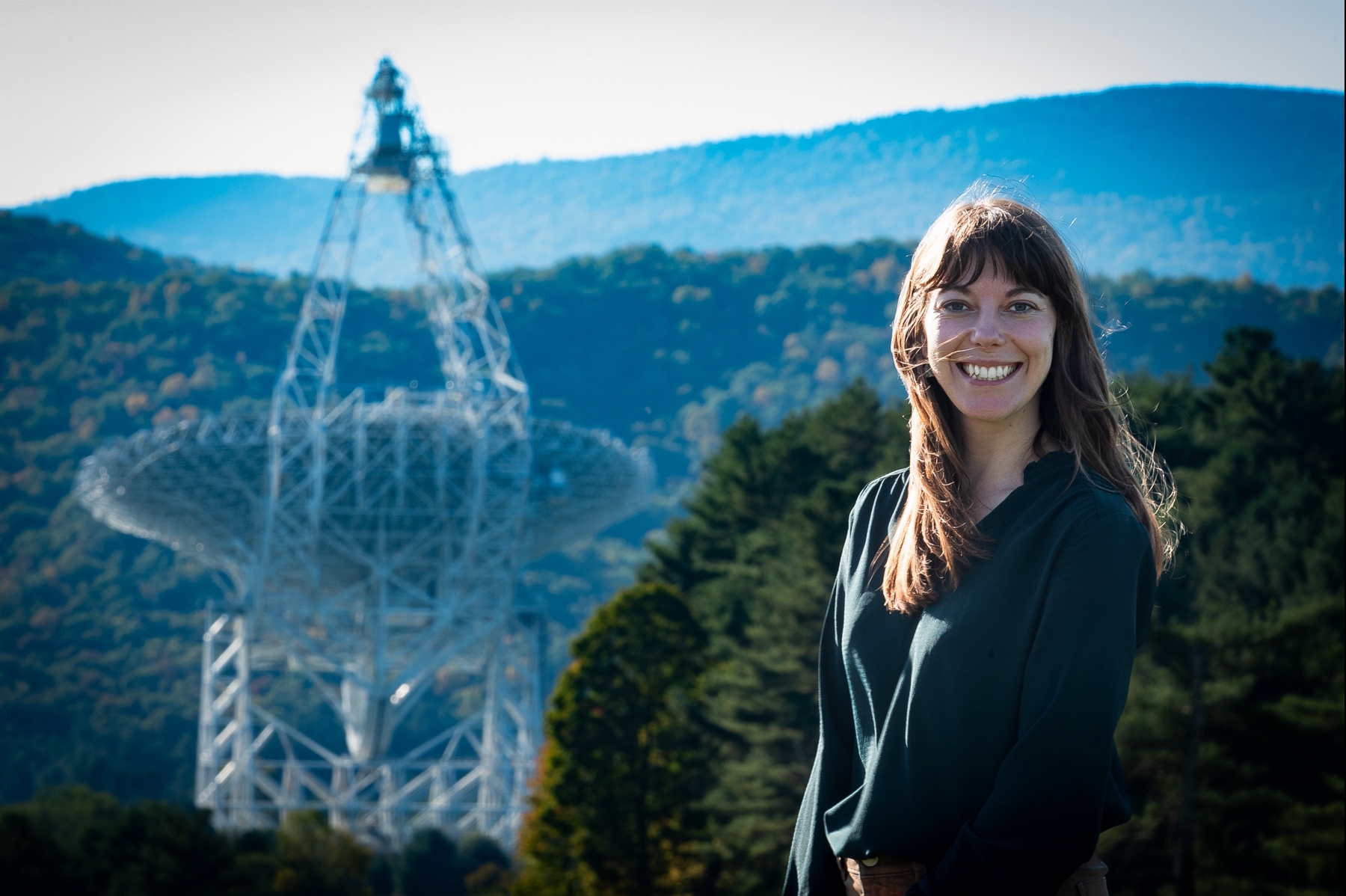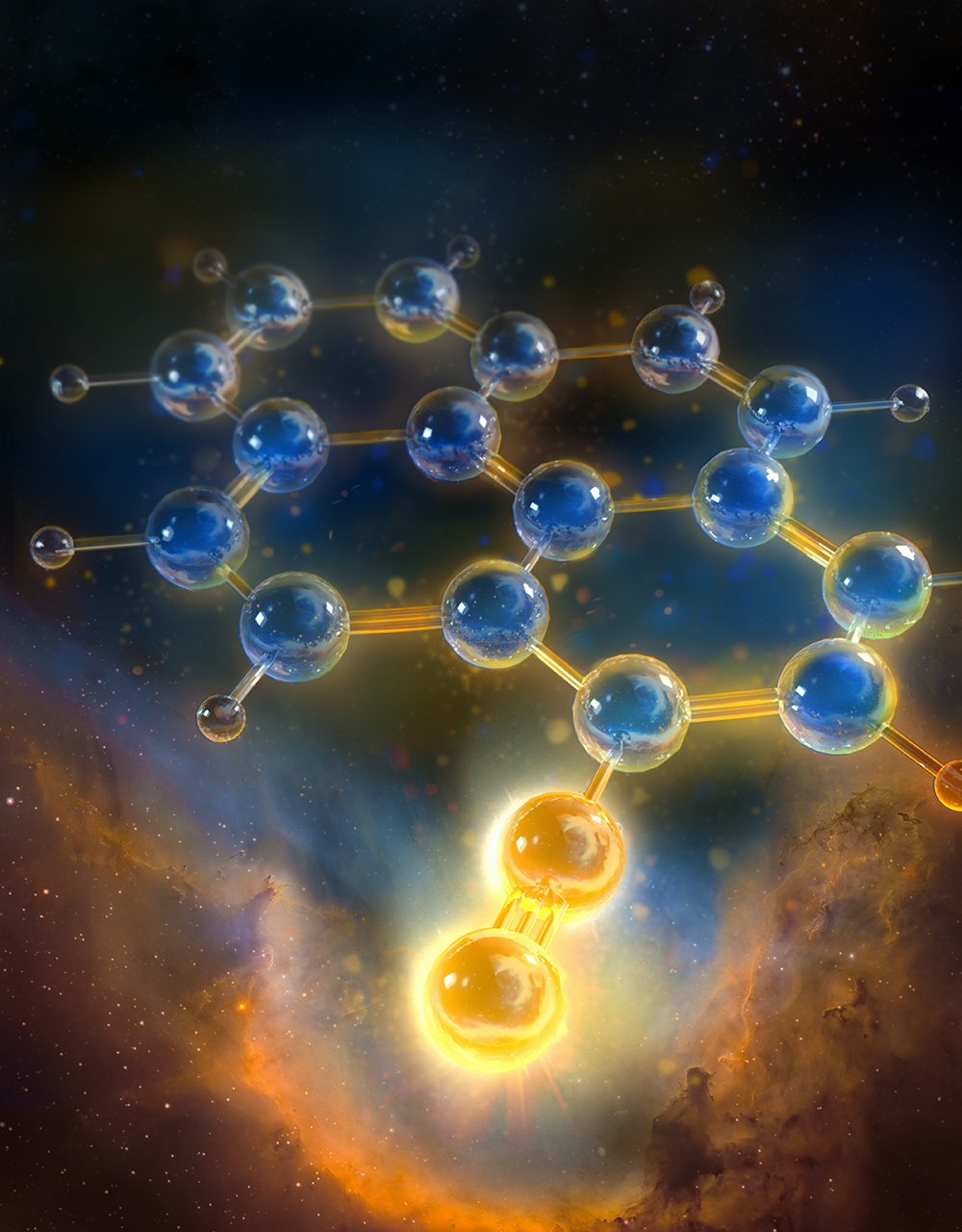New space molecule largest ever detected using radioastronomy
October 21, 2024

October 21, 2024

The discovery of a four-ring carbon molecule in a distant interstellar cloud may help to reveal how our own solar system formed.
An asteroid has helped researchers discover the largest molecule ever detected by radioastronomy, and the third-largest identified in space.
The discovery, published today in Science, provides further clues to an astrochemical mystery: Where does carbon, the building block of life, come from and go to in the universe, including in our own solar system?
Researchers detected pyrene, a type of large carbon-containing molecule known as a polycyclic aromatic hydrocarbon (PAH), in the Taurus molecular cloud—a stellar nursery that is relatively close to Earth at only 430 light years away, or about four quadrillion kilometres (that’s 15 zeroes).

“One of the big questions in star and planet formation is how much of the chemical inventory from that early molecular cloud is inherited and forms the base components of the solar system? What we're looking at is the start and the end, and they're showing the same thing. That's pretty strong evidence that this material from the early molecular cloud finds its way into the ice, dust and rocky bodies that make up our solar system,” says co-senior author Dr. Brett McGuire, assistant professor of chemistry at MIT.
“This is now the seventh individual PAH identified in space since we first found one in 2021,” said co-senior author Dr. Ilsa Cooke, assistant professor in the UBC department of chemistry. “PAHs are hypothesized to contain up to 20 per cent of the carbon in space, and life is made of carbon. Most PAHs are carcinogenic on Earth as they’re usually created from burning fossil fuels, but they have similar chemical structures to the building blocks of life. By learning more about how these molecules form and are transported in space, we learn more about our own solar system and so, the life within it.”
The research team began looking at the cloud after samples from the near-Earth asteroid Ryugu showed large amounts of pyrene, among other PAHs.
They used radio astronomy, which allows scientists to detect individual molecules rather than families of molecules, as with the more commonly used infrared spectroscopy. “Since the PAH hypothesis was developed in the 1980s, many people have accepted that PAHs are in space, and they have been found in meteorites, comets and asteroid samples, but we can't really use infrared spectroscopy to unambiguously identify individual PAHs in space,” said first author Dr. Gabi Wenzel, an MIT postdoctoral fellow.
To detect pyrene, the researchers had to search for its derivative, cyanopyrene, which emits a signal that a radio telescope can detect. They created the molecule in the lab and analyzed its emitted signal, providing a map of what to look for in the gas cloud. They used the Green Bank Telescope, which resides in the ‘Quietest Town in America’ (Green Bank, W. Va), where a no-cellphones policy is in place to prevent interference with astronomical signals. Sure enough, they found cyanopyrene, indicating the presence of pyrene.
They estimated pyrene accounted for about 0.1 per cent of carbon found in the cloud. “That is an absolutely massive abundance. An almost unbelievable sink of carbon. It’s an interstellar island of stability,” said Dr. McGuire.
The gas cloud is only about 10 Kelvin or -260 degrees Celsius, suggesting that it may also be possible for PAHs to form at very low temperatures. “That’s surprising given the way it forms on Earth is at very high temperatures,” said Dr. Cooke. “Future work aims to explore whether PAHs can form somewhere that’s extremely cold, or whether they arrive from elsewhere in the universe, potentially via the death throes of an old star.”
The researchers also plan to look for even larger PAH molecules in the Taurus molecular cloud.
Dr. Cooke’s work adds to a B.C. legacy. Vancouver-born astronomer and UBC alumnus Dr. Andrew McKellar was one of the first people to detect molecules in space in 1937. “It was the beginning of astrochemistry. I’m excited to work in the home ground of Andrew McKellar and in this field,” said Dr. Cooke.
Written by Anne Trafton, MIT and Alex Walls, UBC.
We honour xwməθkwəy̓ əm (Musqueam) on whose ancestral, unceded territory UBC Vancouver is situated. UBC Science is committed to building meaningful relationships with Indigenous peoples so we can advance Reconciliation and ensure traditional ways of knowing enrich our teaching and research.
Learn more: Musqueam First Nation